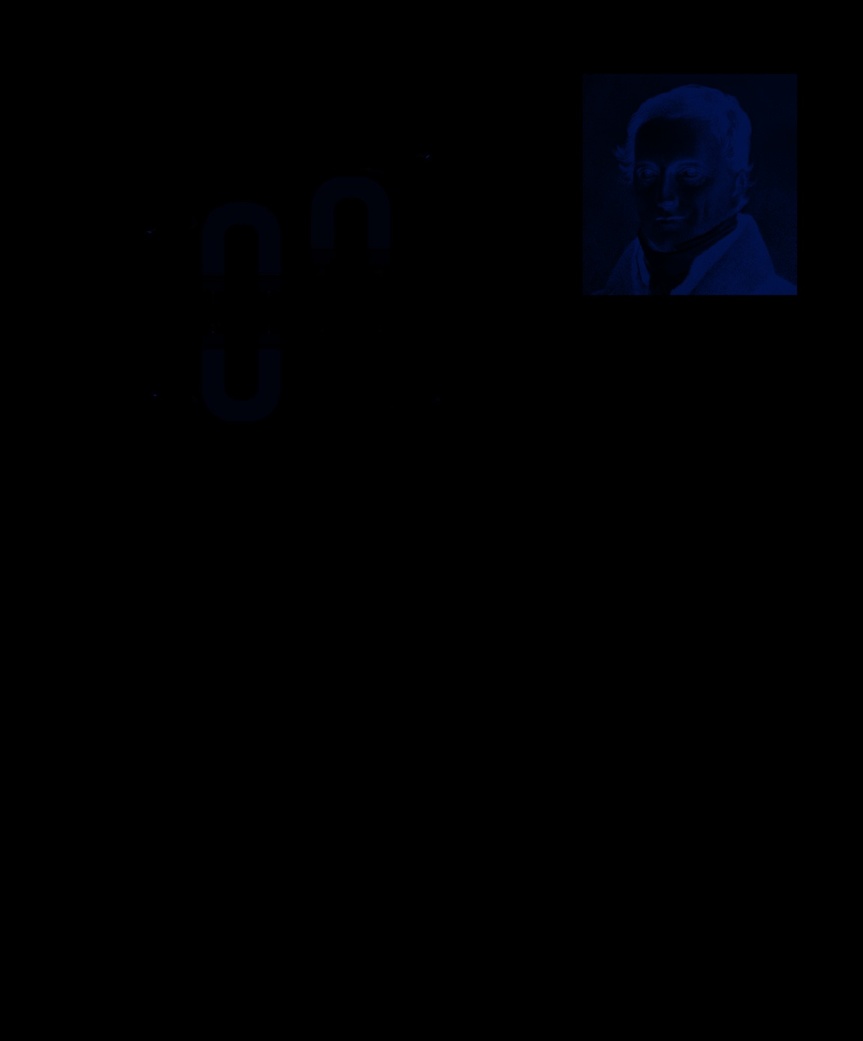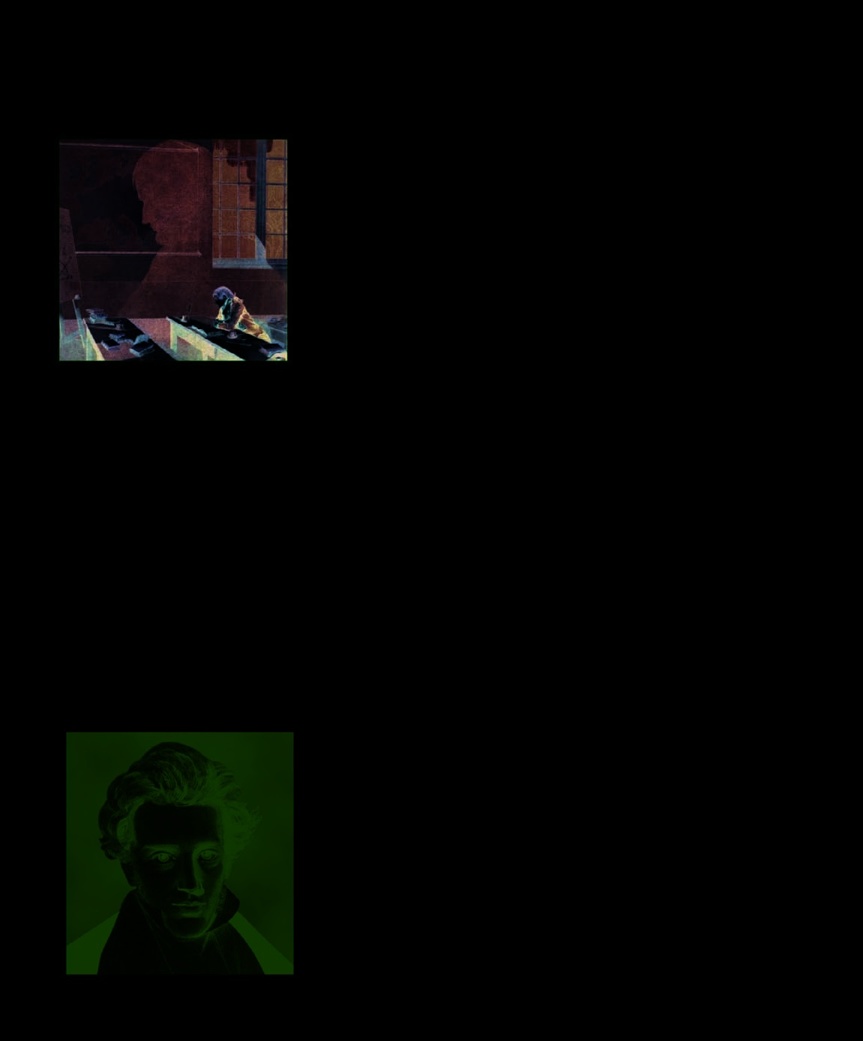Read The Psychology Book Online
Authors: Unknown
The Psychology Book (9 page)
philosopher who wanted to
system for differentiating and
investigate how the mind
storing ideas. He also wanted to
works—in particular, how it
account for the fact that although
unconscious.
manages ideas or concepts. Given
ideas exist forever (Herbart thought
that we each have a huge number of
them incapable of being destroyed),
ideas over the course of our lifetime,
some seem to exist beyond our
how do we not become increasingly
conscious awareness. The 18th-
confused? It seemed to Herbart that
century German philosopher

PHILOSOPHICAL ROOTS 25
See also:
Wilhelm Wundt 32–37 ■ Sigmund Freud 92–99 ■ Carl Jung 102–07 ■
Anna Freud 111 ■ Leon Festinger 166–67
Thoughts and feelings
contain
energy, according to Herbart, acting
on each other like magnets to attract
Two ideas that
or repel like or unlike ideas.
cannot coexist
comfortably
repel
each other
...
+ –
Ideas that
do
not contradict
+ –
each other are
...and one of
Johann Friedrich
drawn together and
them may even be
can coexist in
– +
+ –
Herbart
pushed out of
consciousness.
consciousness.
Johann Herbart was born in
Oldenburg, Germany. He was
tutored at home by his mother
until he was 12, after which
he attended the local school
before entering the University
Gottfried Leibniz was the first
However, if two ideas are unalike,
of Jena to study philosophy.
to explore the existence of ideas
they may continue to exist without
He spent three years as a
beyond awareness, calling them
association. This causes them to
private tutor before gaining
petite
(“small”) perceptions. As
weaken over time, so that they
a doctorate at Göttingen
an example, he pointed out that
eventually sink below the “threshold
University, where he lectured
we often recall having perceived
of consciousness.” Should two ideas
in philosophy. In 1806,
something—such as the detail in
directly contradict one another,
Napoleon defeated Prussia,
and in 1809, Herbart was
a scene—even though we are not
“resistance occurs” and “concepts
offered Immanuel Kant’s chair
aware of noticing it at the time. This
become forces when they resist one
of philosophy at Königsberg,
means that we perceive things and
another.” They repel one another
where the Prussian king and
store a memory of them despite the
with an energy that propels one of
his court were exiled. While
fact that we are unaware of doing so.
them beyond consciousness, into
moving within these
a place that Herbart referred to as
aristocratic circles, Herbart
Dynamic ideas
“a state of tendency;” and we now
met and married Mary Drake,
According to Herbart, ideas form
know as “the unconscious.”
an English woman half his
as information from the senses
Herbart saw the unconscious
age. In 1833, he returned
combines. The term he used for
as simply a kind of storage place for
to Göttingen University,
ideas—
Vorsfellung
—encompasses
weak or opposed ideas. In positing
following disputes with the
thoughts, mental images, and even
a two-part consciousness, split by a
Prussian government, and
emotional states. These make up
distinct threshold, he was attempting
remained there as Professor
the entire content of the mind, and
to deliver a structural solution for the
of Philosophy until his death
from a stroke, aged 65.
Herbart saw them not as static
management of ideas in a healthy
but dynamic elements, able to move
mind. But Sigmund Freud was to
Key works
and interact with one another.
see it as a much more complex and
Ideas, he said, can attract and
revealing mechanism. He combined
1808
General Practical
combine with other ideas or feelings,
Herbart’s concepts with his own
Philosophy
or repulse them, rather like magnets.
theories of unconscious drives to
1816
A Text-book in
Similar ideas, such as a color and
form the basis of the 20th-century’s
Psychology
tone, attract each other and combine
most important therapeutic
1824
Psychology as Science
to form a more complex idea.
approach: psychoanalysis. ■

26
BE THAT SELF
WHICH ONE
TR
SØRE U
N KIE L
RK Y
EGA A I
R S
D (1813–1855)
IN CONTEXT
APPROACH
T
he fundamental question, understanding oneself, famously
“Who am I?” has been
saying: “The unexamined life is not
studied since the time
worth living.” Søren Kierkegaard’s
of the ancient Greeks. Socrates
book
The Sickness Unto Death
Existentialism
(470–399 BCE) believed the main
(1849) offers self-analysis as a
BEFORE
purpose of philosophy is to increase
means to understanding the
happiness through analyzing and
problem of “despair,” which he
5th century BCE
Socrates
states the key to happiness is
discovering the “true self.”
AFTER
I wish to be
other than I am
: to have a different self.
1879
Wilhelm Wundt uses
self-analysis as an approach
to psychological research.
So I try to make myself into
someone different
.
1913
John B. Watson
denounces self-analysis in
psychology, stating that
“introspection forms no
I fail and
despise myself
I succeed and
abandon
essential part of its methods.”
for failing.
my true self
.
1951
Carl Rogers publishes
Client-centered Therapy
, and
in 1961
On Becoming a Person
.
Either way, I
despair
of my true self.
1960
R.D. Laing’s
The Divided
Self
redefines “madness,”
offering existential analysis
of inner conflict as therapy.
To escape despair I must
accept
my true self.
1996
Rollo May bases his
book,
The Meaning of Anxiety
,
on Kierkegaard’s
The Concept
To be that self which one truly is, is indeed the
of Anxiety.
opposite of despair.

PHILOSOPHICAL ROOTS 27
See also:
Wilhelm Wundt 32–37 ■ William James 38–45 ■ Carl Rogers 130–37 ■ Rollo May 141 ■ R.D. Laing 150–51
Napoleon’s overreaching
ambition
his old self. In both his desire and
for power, as depicted in this painting
accomplishment, he wants to “be
of him as a student, led him to lose
rid of” his self. This disavowal of
sight of his true self and all-too-human
the self is painful: despair is
limitations, and ultimately to despair.
overwhelming when a man wants
to shun himself—when he “does not
from an acute consciousness of the
possess himself; he is not himself.”
self, coupled with a profound dislike
However, Kierkegaard did offer a
of it. When something goes wrong,
solution. He concluded that a man
such as failing an exam to qualify
can find peace and inner harmony
as a doctor, a person may seem
by finding the courage to be his
to be despairing over something
true self, rather than wanting to be
that has been lost. But on closer
someone else. “To will to be that
inspection, according to Kierkegaard,
self which one truly is, is indeed the
considered to stem not from
it becomes obvious that the man is
opposite of despair,” he said. He
depression, but rather from the
not really despairing of the thing
believed that despair evaporates
alienation of the self.
(failing an exam) but of himself.
when we stop denying who we
Kierkegaard described several
The self that failed to achieve a
really are and attempt to uncover
levels of despair. The lowest, and
goal has become intolerable. The
and accept our true nature.
most common, stems from ignorance:
man wanted to become a different
Kierkegaard’s emphasis on
a person has the wrong idea about
self (a doctor), but he is now stuck
individual responsibility, and the
what “self” is, and is unaware of
with a failed self and in despair.
need to find one’s true essence
the existence or nature of his
and purpose in life, is frequently
potential self. Such ignorance is
Abandoning the real self
regarded as the beginning of
close to bliss, and so inconsequential
Kierkegaard took the example of
existentialist philosophy. His
that Kierkegaard was not even sure
a man who wanted to become
ideas led directly to R.D. Laing’s
it could be counted as despair. Real
an emperor, and pointed out that
use of existential therapy, and
desperation arises, he suggested,
ironically, even if this man did
have influenced the humanistic
with growing self-awareness, and
somehow achieve his aim, he
therapies practiced by clinical
the deeper levels of despair stem
would have effectively abandoned
psychologists such as Carl Rogers. ■
Søren Kierkegaard
Søren Kierkegaard was born to an
on his life. A solitary figure, his
affluent Danish family, and raised
main recreational activities
as a strict Lutheran. He studied
included walking the streets to
